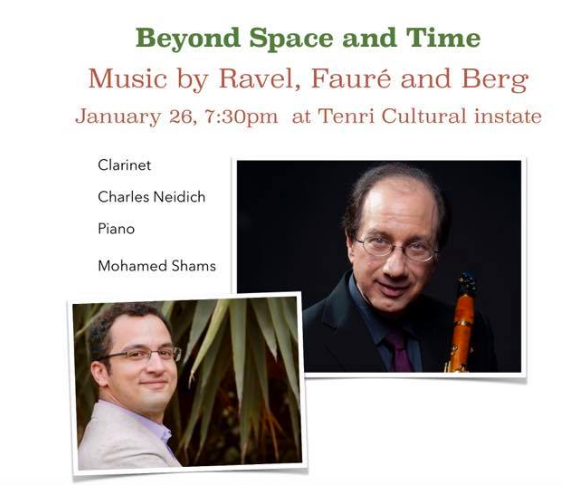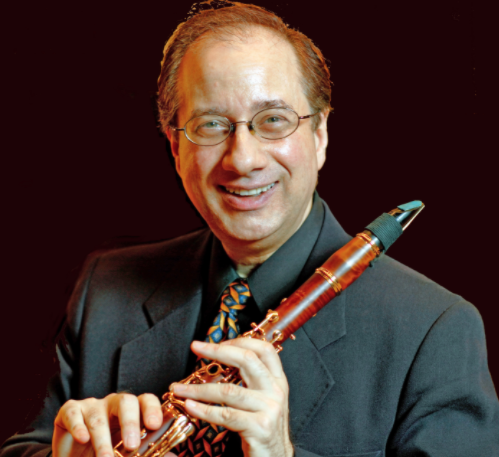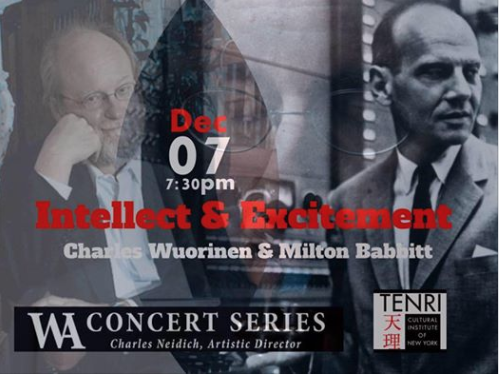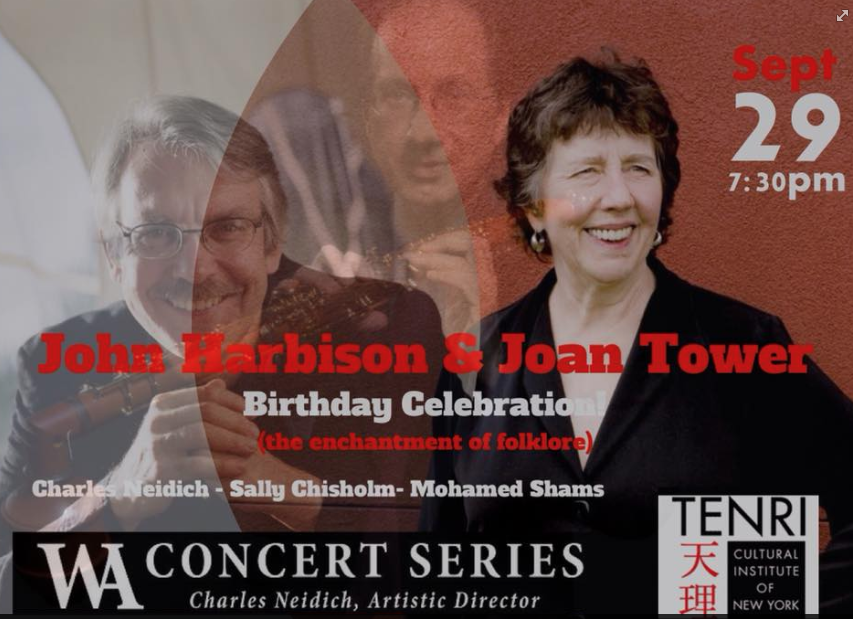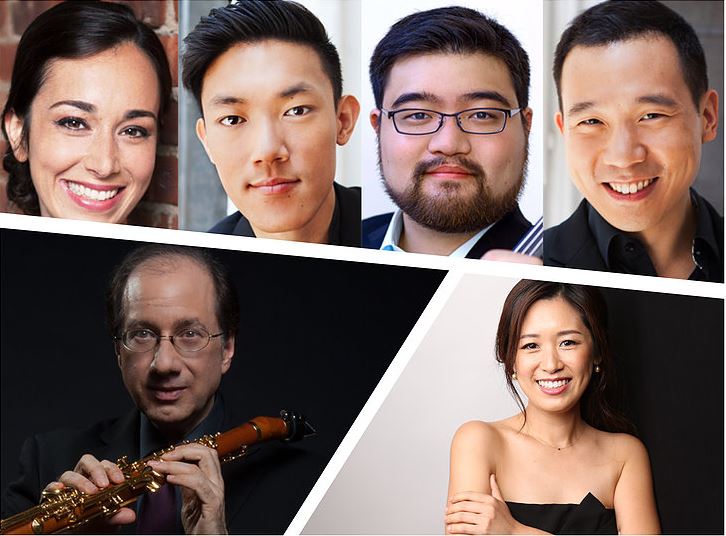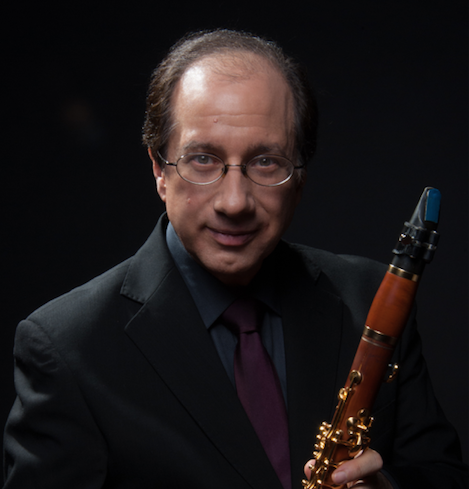Charles Neidich, clarinet; Mohamed Shams, piano
Tenri Cultural Institute, New York, NY
January 26, 2020
It takes an artist of rare commitment, curiosity, and imagination to adapt three large French works for violin and piano, including both of Gabriel Fauré’s sonatas, to rendition by the clarinet. Such an artist is Charles Neidich, as anyone who regularly attends the fine Wa concerts series will already know. Perhaps Mr. Neidich was thinking of Fauré’s remark (I paraphrase): “I think art, and especially music, exists to lift us as far above the human condition as possible.”Mr. Neidich was elegantly partnered by pianist Mohamed Shams, who absorbed the complex scores and clarified their textures at every turn.
The evening began with the rarely heard early violin and piano sonata by Ravel. In one sonata-form movement, Ravel touches upon his Basque origins on his mother’s side and seems to presage the opening of his Piano Trio, as well as a certain rather turgid chromaticism that he was loathe to return to in his mature works. Apparently the work was performed only once, in 1897, by noted violinist George Enescu and Ravel; its rediscovery, publication, and public world premiere took place in 1975, by Ravel scholar and biographer Arbie Orenstein (piano) with Gerald Tarack on violin. Tonight’s audience was treated to a brief video of Mr. Orenstein at home speaking with Mr. Neidich about the work and showing some of his priceless collection of Ravel autographs. One interesting feature of the work is how “static” many measures in the piano part are, simply repeating patterns and/or chords two-by-two (or four by four)—this should not actually come as a surprise when one leaps forward thirty-one years to the creation of the most repetitive work in the standard orchestra repertoire: Bolero.
The first half concluded with Fauré’s Violin Sonata No. 1 in A major, Op. 13, a work that surges with the passionate heat of his romantic involvement with Marianne Viardot, daughter of famed mid-19th century contralto opera diva Pauline Viardot. The sonata is dedicated to Pauline’s violinist son, Paul Viardot. The engagement did not go well: Fauré was extremely possessive and jealous, neither one had particularly good health, and Marianne broke off relations with Gabriel. We must remember into what a dismal state chamber music had fallen in France at this time. A new French national society had been formed after France’s disastrous defeat in the Franco-Prussian war precisely to remedy this (the sonata was premiered at this society on January 27, 1877, with the composer at the piano and violinist Marie Tayau,). Fauré’s sonata was written ten years before Franck’s sonata in the same key. The performance had lovely and appropriate rubato, which was never excessive. One area in which the clarinet’s limitations show (as substituted for the violin), is in the extreme upper registers. Things that would not be particularly difficult for a string player take on a too-bright quality, though Mr. Neidich sensitively lowered some phrases by an octave—I could have used a bit more rearrangement like that. Also, broken octaves, so idiomatic and easy on violin (string crossing) become obstacle courses for an embouchure. I must mention the gossamer tempo of the scherzo movement, Mr. Shams was brilliantly leggierissimo, as demanded by Fauré. The slow movement was dignified in its mournful tread. In a supreme irony, Fauré’s friend Camille Clerc, convinced prestigious music publisher Breitkopf to take a risk and publish the work, but for a flat fee; one of Fauré’s best-sellers would generate no royalties for him.
After intermission, Mr. Shams took the stage by himself for a performance of Alban Berg’s seminal Piano Sonata, an astonishing “Opus 1,” composed in 1909 and premiered the following year. It is an apotheosis of late-Romanticism, straining at the bounds of tonality without breaking them. I sometimes refer to it as “Brahms’ Opus 219.” An intricate interlocking of motives based on fourths, both melodic and harmonic, leads us through this single-movement sonata (though Mr. Shams omitted the exposition repeat). Practically every note in the work has multiple markings and words written in the score specifying this or that alteration to tempo, dynamic, articulation. All this was organized beautifully by Mr. Shams, and he savored the manifold color changes with a very personal sense of involvement—there are many possible approaches to this score.
The concert concluded with Fauré’s Violin Sonata No. 2 in E minor, Op. 108, a work of his late years, after the tragic deafness that forced him into a more private, interior world. What is interesting is the way the first movement is actually quite violent emotionally, compared to what one “expects” from the master of charm. This reflects not only anger at his infirmity, but also the murderous raging of World War I during which it was composed. The dedicatee is Elisabeth, Queen of Belgium, a nation that was overrun by that very war. To this day, there exists a music competition in Belgium in her name. This work is not well known, even by musicians, let alone the general public; it seems to speak its own private language. But if one has ears to hear, the subtleties and harmonic audacities are stunning, and the amount of canonic writing (a favorite procedure of Fauré) between solo and right or left hand of the piano is immense. The slow movement is an elegy for a vanishing civilization. Ultimately, the work finishes with a cheerful, sometimes wistful, rondo. Both players were beautifully expressive, though some of the aforementioned register issues surfaced.
After such an esoteric evening, Mr. Neidich curated one more transcription as an encore, another rarely heard violin-piano work, Fauré’s Andante in B-flat major, Op. 75. This genial mid-period work is a recycling of a projected slow movement from a never-completed violin concerto from Fauré’s early period. This contained some of the finest lyricism of the evening, and the players were greeted with the customary loud ovations, prior to the audience’s hastening to the delicious dinner offering prepared by Mr. Neidich’s clarinet/chef spouse, Ayako Oshima.
There remain two more Wa concerts this season. A word to the wise: Wend your way there.

